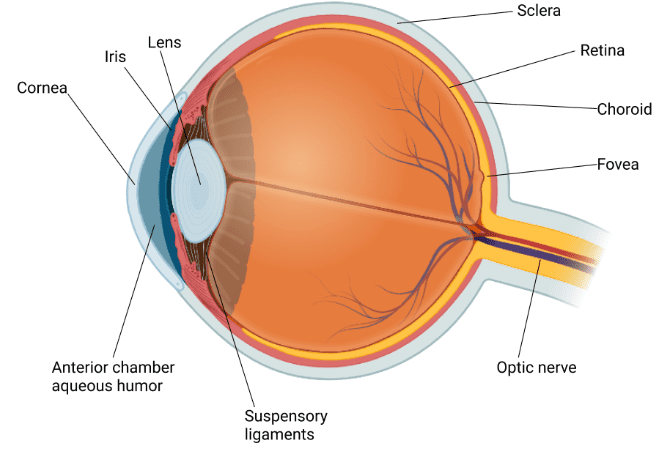Light Class 8 important questions with answers PDF download
FAQs on CBSE Important Questions for Class 8 Science Light - 2025-26
1. What are the two laws of reflection? This is a frequently asked question for the Class 8 Science exam.
The two fundamental laws of reflection, crucial for scoring well in the Light chapter, are:
The angle of incidence (∠i) is always equal to the angle of reflection (∠r).
The incident ray, the normal at the point of incidence, and the reflected ray all lie in the same plane.
2. For a 3-mark question, differentiate between regular and diffused reflection.
To secure full marks, a clear distinction between regular and diffused reflection should be presented:
Surface: Regular reflection occurs on a smooth, polished surface like a plane mirror, while diffused reflection occurs on a rough or irregular surface like a wall or paper.
Reflected Rays: In regular reflection, all parallel incident rays are reflected in a single direction, remaining parallel to each other. In diffused reflection, parallel incident rays are scattered in multiple directions.
Image Formation: Regular reflection forms a clear, distinct image. Diffused reflection does not form a clear image but makes the object itself visible from various angles.
3. From an exam perspective, what are the most important functions of the iris and retina in the human eye?
The key functions to mention for full marks are:
Iris: The iris is a dark muscular diaphragm that controls the size of the pupil. It adjusts the amount of light entering the eye. In bright light, it contracts the pupil, and in dim light, it expands the pupil.
Retina: The retina acts like a screen at the back of the eye where the image is formed. It contains millions of light-sensitive cells, called rods and cones, which convert light energy into electrical signals that are sent to the brain via the optic nerve.
4. What is a blind spot, and why is it considered a potential conceptual trap in exam questions?
The blind spot is a small area on the retina where the optic nerve and blood vessels leave the eyeball. This region has no photoreceptor cells (neither rods nor cones). Consequently, any light that falls on the blind spot cannot be detected, and no image is formed there. It's a conceptual trap because students might assume the entire retina can see; understanding this specific exception shows a deeper knowledge of the eye's structure.
5. How does a kaleidoscope work? Explain the scientific principle behind it.
A kaleidoscope works on the principle of multiple reflections. It consists of three rectangular mirror strips joined together to form a prism, placed inside a tube. When you look through one end, the pieces of coloured glass at the other end are reflected by the mirrors. The mirrors, inclined at an angle to each other (usually 60°), create a multitude of symmetrical, beautiful patterns as the light rays are reflected again and again.
6. Why are we able to see non-luminous objects like a book or a chair?
This is a key concept based on reflection. Non-luminous objects do not produce their own light. We can see them only when light from a luminous source (like the Sun or a light bulb) falls on them. The object then reflects this light in various directions. When these reflected light rays enter our eyes, our brain processes the signal, and we become aware of the object's presence. This is primarily due to diffused reflection, which scatters light and allows the object to be seen from multiple angles.
7. What is the Braille system and why is it an important topic for Class 8 Science?
The Braille system is a tactile writing system used by visually impaired people to read and write. It was developed by Louis Braille. The system uses a pattern of 63 raised dots to represent different letters, combinations of letters, and punctuation marks. It is an important topic because it highlights how scientific understanding can be used to develop resources that aid people with disabilities, enabling literacy and communication.
8. What is dispersion of light? Mention a natural phenomenon where this is observed.
Dispersion is the phenomenon of the splitting of white light into its constituent colours when it passes through a transparent medium like a prism. The band of seven colours obtained is called a spectrum (VIBGYOR - Violet, Indigo, Blue, Green, Yellow, Orange, Red). The most common natural phenomenon where dispersion is observed is the formation of a rainbow, where tiny water droplets suspended in the air act as small prisms.
9. For a 5-mark question, list five essential measures for taking care of your eyes as per the CBSE syllabus.
To ensure the health of our eyes, the following five measures are crucial:
Always read at a normal distance for vision (about 25 cm); avoid reading by bringing the book too close to your eyes or keeping it too far.
If advised, use suitable spectacles. Do not use someone else's glasses.
Avoid looking directly at the sun or any other powerful light source, as it can damage the retina.
Wash your eyes frequently with clean, cold water. If a dust particle enters, do not rub; splash water gently until it is removed.
Ensure a diet rich in Vitamin A, found in foods like carrots, green leafy vegetables, and papaya, which is essential for good eyesight.



















